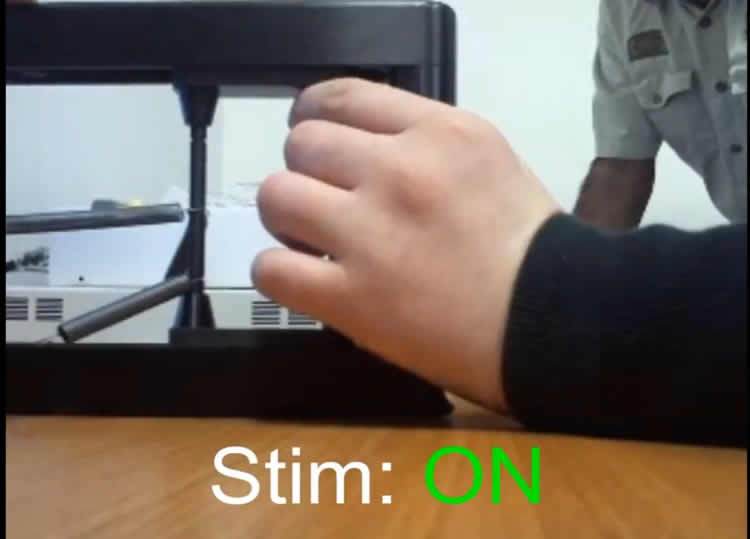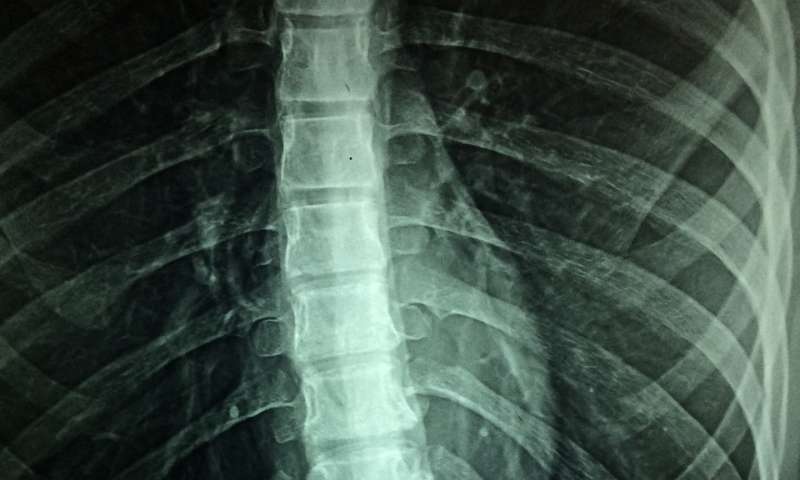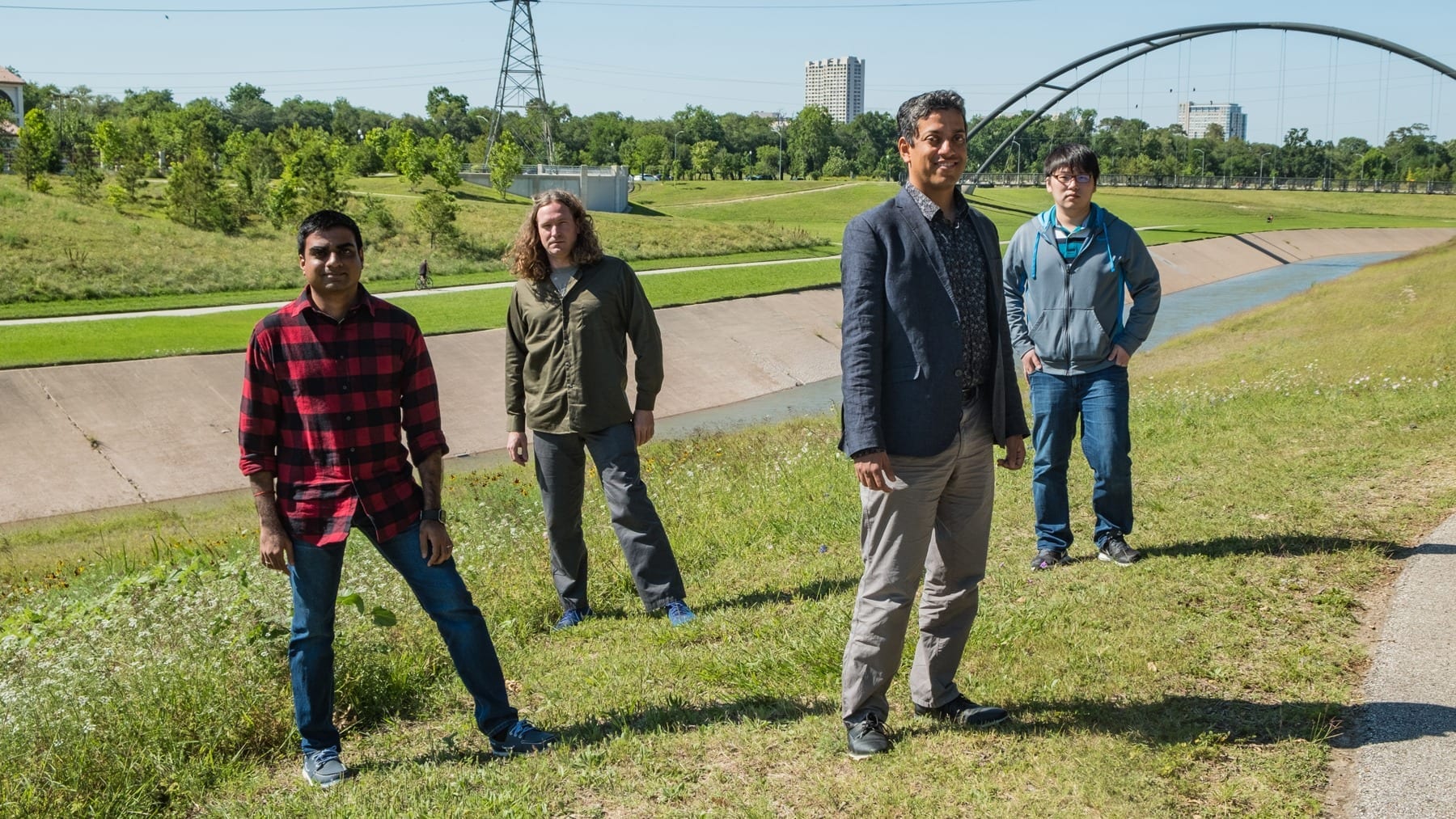
Nonsurgical technique allows them to turn doorknobs, open water bottles for the first time in years
he ability to perform simple daily tasks can make a big difference in people’s lives, especially for those with spinal cord injuries. A UCLA-led team of scientists reports that six people with severe spinal cord injuries — three of them completely paralyzed — have regained use of their hands and fingers for the first time in years after undergoing a nonsurgical, noninvasive spinal stimulation procedure the researchers developed.
At the beginning of the study, three of the participants could not move their fingers at all, and none could turn a doorknob with one hand or twist a cap off a plastic water bottle. Each of them also had great difficulty using a cellphone. After only eight researcher-led training sessions with the spinal stimulation, all six individuals showed substantial improvements. The study participants had chronic and severe paralysis for more than one year, and some for more than 10 years.
From before the first session to the end of the last session, the participants improved their grip strength.
“About midway through the sessions, I could open my bedroom door with my left hand for the first time since my injury and could open new water bottles, when previously someone else had to do this for me,” said Cecilia Villarruel, one of the participants, whose injury resulted from a car accident 13 years earlier. “Most people with a spinal cord injury say they just want to go to the bathroom like a normal person again,” she said. “Small accomplishments like opening jars, bottles and doors enable a level of independence and self-reliance that is quite satisfying, and have a profound effect on people’s lives.”
In addition to regaining use of their fingers, the research subjects also gained other health benefits, including improved blood pressure, bladder function, cardiovascular function and the ability to sit upright without support.
“Within two or three sessions, everyone started showing significant improvements, and kept improving from there,” said the study’s lead author, UCLA research scientist Parag Gad.
“After just eight sessions, they could do things they haven’t been able to do for years,” said V. Reggie Edgerton, senior author of the research and a UCLA distinguished professor of integrative biology and physiology, neurobiology and neurosurgery.
This is the largest reported recovery of the use of hands that has been reported in patients with such severe spinal cord injuries, Edgerton said.
The researchers placed electrodes on the skin to stimulate the circuitry of the spinal cord. They call their method “transcutaneous enabling motor control,” or tEmc. In the stimulation, electrical current is applied at varying frequencies and intensities to specific locations on the spinal cord.
In the training sessions, the participants squeezed a small gripping device 36 times (18 times with each hand) and held their grip for three seconds; the researchers measured the amount of force they used. The training consisted of two sessions a week over four weeks; the eight sessions each lasted about 90 minutes.
“The combination of spinal stimulation plus training with the hands allows them to regain the lost function,” Gad said. They were less dependent on their caregivers, and could feed and dress themselves, he added.
Two of the six returned to Edgerton’s laboratory 60 days after the training ended and maintained their grip strength; they could turn a doorknob with one hand, twist off a bottle cap and use a fork with one hand. (The four others did not return to the laboratory. The research subjects live in New York, Minnesota and elsewhere.)
Learn more: Noninvasive spinal stimulation method enables paralyzed people to regain use of hands, study finds
The Latest on: Spinal stimulation
[google_news title=”” keyword=”spinal stimulation” num_posts=”10″ blurb_length=”0″ show_thumb=”left”]
via Google News
The Latest on: Spinal stimulation
- ONWARD® Medical Convocation of the 2024 Annual General Meeting of Shareholders and Proposed Resolutionson May 1, 2024 at 10:00 pm
V. (Euronext: ONWD), a medical technology company creating innovative spinal cord stimulation therapies to restore movement, function, and independence in people with spinal cord injury (SCI), today ...
- 9 medtech notes: Medtronic, Stryker and moreon May 1, 2024 at 6:37 am
From layoffs to quarterly updates, here are nine updates from spine and orthopedic medtech companies since April 24.
- Medtronic wins FDA approval for Inceptiv closed-loop spinal cord stimulatoron April 29, 2024 at 11:59 am
Saluda Medical received FDA approval for a closed-loop device in 2022 but the big, publicly traded SCS companies have only provided open-loop systems. Medtronic said it will launch Inceptiv in the U.S ...
- Medtronic bags FDA approval for Inceptiv spinal cord stimulatoron April 29, 2024 at 3:42 am
The device is now cleared to enter the US market to treat chronic pain by outputting electrical pulses in rhythm with the user.
- More horror stories about spinal cord stimulators emerge as calls grow for action to protect patientson April 28, 2024 at 6:25 pm
After a Four Corners investigation exposed safety issues with spinal cord stimulators, more patients have come forward to share their experiences of complications from the devices or the procedures to ...
- Brainless memory makes the spinal cord smarter than previously thoughton April 26, 2024 at 8:49 am
Researchers have discovered the neural circuitry in the spinal cord that allows brain-independent motor learning. The study found two critical groups of spinal cord neurons, one necessary for new ...
- Medtronic gets FDA okay for Inceptiv closed-loop spinal cord stimulatoron April 26, 2024 at 8:32 am
The FDA has approved Medtronics’ ( NYSE: MDT) Inceptiv closed-loop rechargeable spinal cord stimulator for the treatment of chronic pain. Medtronic said Inceptiv is its first spinal cord stimulator ...
- Medtronic snags FDA approval for body-sensing, closed-loop spinal cord stimulatoron April 26, 2024 at 8:31 am
Medtronic has secured FDA approval for its first closed-loop spinal cord stimulator, designed to take in signals from the body and adjust its therapy automatically. | The Inceptiv implant for chronic ...
- FDA approves Medtronic’s Inceptiv closed-loop rechargeable spinal cord stimulatoron April 26, 2024 at 6:15 am
Inceptiv treats chronic pain and represents Medtronic’s first SCS device to offer a closed-loop feature. This feature senses each person’s unique biological signals, adjusting stimulation ...
via Bing News










